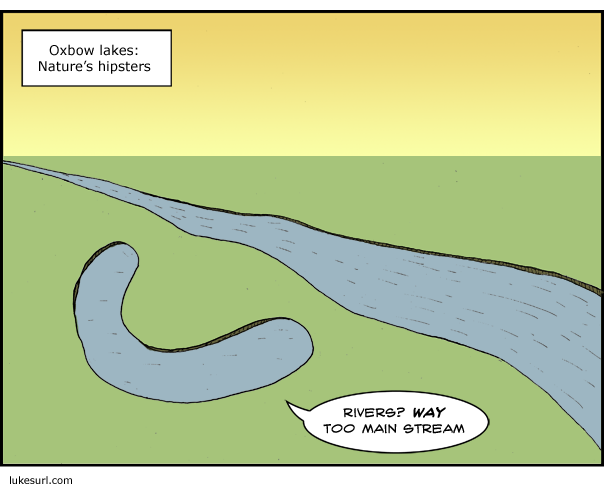And a hat tip to Tengrain, who reminded me of this one yesterday: Freur, Doot Doot:
Miscellaneous thoughts on politics, people, math, science and other cool (if sometimes frustrating) stuff from somewhere near my favorite coffee shop.
Saturday, March 5, 2011
Saturd80's
The Ramones, The KKK Took My Baby Away:
I think I've posted this one before, but I like it. Fad Gadget, Collapsing New People:
And a hat tip to Tengrain, who reminded me of this one yesterday: Freur, Doot Doot:
And a hat tip to Tengrain, who reminded me of this one yesterday: Freur, Doot Doot:
Thursday, March 3, 2011
Chromite Mine to Open on Oregon Coast
Back at the beginning of the year I saw an article in OregonLive about fears of a chromite operation slated to begin near Coos Bay. Much of it was allegations and refutations of potential contamination by hexavalent chromium (the "bad" kind, as opposed to trivalent chromium, the "harmless" kind). I'm not an environmental chemist, so I can't say whether these allegations are valid or not, but I can point out that the chromite is already there in unconsolidated sands. I'm not sure how removing it will change its chemical behavior for the worse- not saying it won't or couldn't, just saying I'm not sure how. A photo caption from The Coos Bay World claims zircon and garnet will be extracted as well.
I saw a talk at OSU during the mid-late 80's, toward the end of my degree, on the potential for offshore mining operations in wave- and current-sorted sands, as well as some onshore prospects in uplifted terrace deposits of the same nature. I don't remember if the Coos Bay prospect was one mentioned, but I do know there were a few on the southern coast, and that chromite was the primary mineral of interest at these sites. (There was also some interest at the time in a titanium mineral- ilmenite, I think- in some areas of the northern coast.) I don't know whether minerals sorted and concentrated by marine shore processes are properly referred to as placers, or if that word specifically implies stream deposits, but the result is the same: heavy minerals become concentrated in certain areas where the competence of flowing water drops off.
The Coos Bay to Bandon stretch of the Oregon Coast is a particularly exciting one, being the transition zone from the Coast Range sedimentary sequence to the Klamath Mountain terranes. A local equivalent to the Franciscan Melange crops out at Bandon, and I have talked about the blueschist I associate with that town here.
 (In the Google Earth image above, I have copied and moved the scale bar so I could crop out much of the ocean.) That ragged bit of shoreline to the SW of the location named Barview is the site of my three favorite parks on the Oregon Coast: Sunset Bay, Shore Acres and Cape Arago. I'm not going to go into their geology in any detail here, but they sit upon folded and faulted Eocene Coaledo Formation, of Coast range affinity. The blueschist at Bandon is reported to have a Jurassic to Cretaceous age. I don't know if the contact between these two provinces is exposed anywhere; I've never seen it, though I'd love to.
(In the Google Earth image above, I have copied and moved the scale bar so I could crop out much of the ocean.) That ragged bit of shoreline to the SW of the location named Barview is the site of my three favorite parks on the Oregon Coast: Sunset Bay, Shore Acres and Cape Arago. I'm not going to go into their geology in any detail here, but they sit upon folded and faulted Eocene Coaledo Formation, of Coast range affinity. The blueschist at Bandon is reported to have a Jurassic to Cretaceous age. I don't know if the contact between these two provinces is exposed anywhere; I've never seen it, though I'd love to.
Along with a wide variety of other rocks, one of the notable components of the Klamath Mountains are several ophiolite sequences (the serpentine I posted on a couple of years ago came from the Josephine Ophiolite, which extends from northern California northward quite a way into Oregon) and their associated ultramafic rocks. A common accessory mineral in these rocks is chromite- which in some cases can actually form a fairly large portion of the rock by volume. There are some nice layered chromite/gabbro outcrops at Strawberry Mountain in central Oregon. But in the Klamaths, chromite can be concentrated as stream placers- there were some small, scattered operations in the region during WWII- or as in the case near Coos Bay, concentrated by shore processes.
It may seem like a lot of fuss, but the reason that this is important is that as far as I've been able to tell, the US has no chromium mines at this point, and it is an important metal, both industrially and strategically. Unlike some of the resources I pointed out yesterday, I don't have the sense that we're "running out." The primary world producer is South Africa, followed by India and Kazakhstan. Canada is not listed at that link, but according to an article at Cleveland.com a month ago, that may be about to change. However, for a metal as critical to industry and defense as chromium, to have no domestic source is not a desirable state of affairs. I suspect, given the size of the area under discussion, that the actual production rate will be a mere drop in the bucket compared to total US demand, but it's better than nothing.
The Coos Bay area- much of the Oregon Coast, really- has been under severe economic pressure basically since I moved out here. The decline of the timber industry and restrictions on fisheries to prevent overfishing, combined with high property values, have made life difficult for many coastal workers. While this mine will not profoundly impact US industry, I hope it offers a decent living for a few of my fellow Oregonians. Speaking of which, they're looking for workers.
I saw a talk at OSU during the mid-late 80's, toward the end of my degree, on the potential for offshore mining operations in wave- and current-sorted sands, as well as some onshore prospects in uplifted terrace deposits of the same nature. I don't remember if the Coos Bay prospect was one mentioned, but I do know there were a few on the southern coast, and that chromite was the primary mineral of interest at these sites. (There was also some interest at the time in a titanium mineral- ilmenite, I think- in some areas of the northern coast.) I don't know whether minerals sorted and concentrated by marine shore processes are properly referred to as placers, or if that word specifically implies stream deposits, but the result is the same: heavy minerals become concentrated in certain areas where the competence of flowing water drops off.
The Coos Bay to Bandon stretch of the Oregon Coast is a particularly exciting one, being the transition zone from the Coast Range sedimentary sequence to the Klamath Mountain terranes. A local equivalent to the Franciscan Melange crops out at Bandon, and I have talked about the blueschist I associate with that town here.
 (In the Google Earth image above, I have copied and moved the scale bar so I could crop out much of the ocean.) That ragged bit of shoreline to the SW of the location named Barview is the site of my three favorite parks on the Oregon Coast: Sunset Bay, Shore Acres and Cape Arago. I'm not going to go into their geology in any detail here, but they sit upon folded and faulted Eocene Coaledo Formation, of Coast range affinity. The blueschist at Bandon is reported to have a Jurassic to Cretaceous age. I don't know if the contact between these two provinces is exposed anywhere; I've never seen it, though I'd love to.
(In the Google Earth image above, I have copied and moved the scale bar so I could crop out much of the ocean.) That ragged bit of shoreline to the SW of the location named Barview is the site of my three favorite parks on the Oregon Coast: Sunset Bay, Shore Acres and Cape Arago. I'm not going to go into their geology in any detail here, but they sit upon folded and faulted Eocene Coaledo Formation, of Coast range affinity. The blueschist at Bandon is reported to have a Jurassic to Cretaceous age. I don't know if the contact between these two provinces is exposed anywhere; I've never seen it, though I'd love to.Along with a wide variety of other rocks, one of the notable components of the Klamath Mountains are several ophiolite sequences (the serpentine I posted on a couple of years ago came from the Josephine Ophiolite, which extends from northern California northward quite a way into Oregon) and their associated ultramafic rocks. A common accessory mineral in these rocks is chromite- which in some cases can actually form a fairly large portion of the rock by volume. There are some nice layered chromite/gabbro outcrops at Strawberry Mountain in central Oregon. But in the Klamaths, chromite can be concentrated as stream placers- there were some small, scattered operations in the region during WWII- or as in the case near Coos Bay, concentrated by shore processes.
It may seem like a lot of fuss, but the reason that this is important is that as far as I've been able to tell, the US has no chromium mines at this point, and it is an important metal, both industrially and strategically. Unlike some of the resources I pointed out yesterday, I don't have the sense that we're "running out." The primary world producer is South Africa, followed by India and Kazakhstan. Canada is not listed at that link, but according to an article at Cleveland.com a month ago, that may be about to change. However, for a metal as critical to industry and defense as chromium, to have no domestic source is not a desirable state of affairs. I suspect, given the size of the area under discussion, that the actual production rate will be a mere drop in the bucket compared to total US demand, but it's better than nothing.
The Coos Bay area- much of the Oregon Coast, really- has been under severe economic pressure basically since I moved out here. The decline of the timber industry and restrictions on fisheries to prevent overfishing, combined with high property values, have made life difficult for many coastal workers. While this mine will not profoundly impact US industry, I hope it offers a decent living for a few of my fellow Oregonians. Speaking of which, they're looking for workers.
Wednesday, March 2, 2011
Running on Empty
Cracked has a list of "6 Important Things You Didn't Know We're Running Out Of." I generally don't look to that website for substantive news- more specifically science news- but they often have things of interest. As long as you take the information there as primarily anecdotal, and don't simply accept their claims at face value, there's plenty of articles that can lead down thought-provoking paths.
Of the three earth material resources they mention (helium, phosphorus and water) only phosphorus is one that wouldn't have come immediately to mind. I think I would have come to it eventually, but there are a number of others that might have come up faster for me. The key qualifier is "things most people wouldn't know we're running out of." So oil, for example, is not on the list. Neither are rare earth elements (REE's). The latter may not be included because they've received a fair amount of publicity over the last year or so (but then, so has fresh water in recent years), or because the issue is not running out, but competitive supplies to counterbalance China's economic lock on these strategic materials.
Likewise in opposition to REE's, we're not going to "run out" of phosphorus- there's an enormous amount of it both in the solid earth and in the hydrosphere (not to mention the biosphere). The issue is that the relatively cheap and easy to extract sources we've become dependent upon are being depleted. There are other sources, but they are more expensive to utilize. The same holds true, albeit with perhaps greater urgency and proportionally less public awareness, with fresh water.
So the issue, such as it is, is not that the earth is going to "run out" of these materials, but that between prices being kept artificially low, a lack of broad awareness of the limited nature of these resources, or at least the cheapest to use sources of them, and what strikes me as a particularly American outlook, that resources have no value unless someone is directly making money off of them, we are facing bottlenecks in a number of materials that have become indispensably important to a modern quality of life. Continuing to use these materials at our present rate is sustainable only by increasing the amount of energy and effort- that is, cost- to concentrate them into usable form.
My main concern is not so much that we will "run out" of these substances, but the profligate and irreversible ecologic damage that is likely to accompany efforts to minimize cost increases. For example, it would be comparatively cheap to augment our electricity generating capacity with coal power; coal is one resource the US is not going to run out of soon. However, even overlooking climate change- likely the most dangerous consequence of over-reliance on coal- the devastation caused by fly ash containment ponds, mercury contamination, particulate pollution, mountain-top mining, and so on and so on, should raise concerns with anyone who likes the idea of a livable environment.
So to geobloggers: What other resource(s) can you think of whose main sources are not going to last too much longer? I nominate boron, which is not an abundant element to begin with, and whose main source is evaporite deposits. It is used in glasses, ceramics, semiconductors, chemical processing, and has a very broad neutron capture cross section, which means it's good at capturing neutrons. Those of you who are old enough may remember that in the aftermath of the Chernobyl disaster, the news reports talked quite a bit about helicopters dumping sand and borax on the exposed ruin of the core. I didn't understand at the time, but the idea was to block thermal neutrons from reaching more uranium fragments, thus suppressing runaway fission. I don't know what estimates are for how long known boron resources will last at current rates of consumption, but since learning how restricted its economic occurrence is, and learning how many uses it has, it's been an element of concern for me.
Of the three earth material resources they mention (helium, phosphorus and water) only phosphorus is one that wouldn't have come immediately to mind. I think I would have come to it eventually, but there are a number of others that might have come up faster for me. The key qualifier is "things most people wouldn't know we're running out of." So oil, for example, is not on the list. Neither are rare earth elements (REE's). The latter may not be included because they've received a fair amount of publicity over the last year or so (but then, so has fresh water in recent years), or because the issue is not running out, but competitive supplies to counterbalance China's economic lock on these strategic materials.
Likewise in opposition to REE's, we're not going to "run out" of phosphorus- there's an enormous amount of it both in the solid earth and in the hydrosphere (not to mention the biosphere). The issue is that the relatively cheap and easy to extract sources we've become dependent upon are being depleted. There are other sources, but they are more expensive to utilize. The same holds true, albeit with perhaps greater urgency and proportionally less public awareness, with fresh water.
So the issue, such as it is, is not that the earth is going to "run out" of these materials, but that between prices being kept artificially low, a lack of broad awareness of the limited nature of these resources, or at least the cheapest to use sources of them, and what strikes me as a particularly American outlook, that resources have no value unless someone is directly making money off of them, we are facing bottlenecks in a number of materials that have become indispensably important to a modern quality of life. Continuing to use these materials at our present rate is sustainable only by increasing the amount of energy and effort- that is, cost- to concentrate them into usable form.
My main concern is not so much that we will "run out" of these substances, but the profligate and irreversible ecologic damage that is likely to accompany efforts to minimize cost increases. For example, it would be comparatively cheap to augment our electricity generating capacity with coal power; coal is one resource the US is not going to run out of soon. However, even overlooking climate change- likely the most dangerous consequence of over-reliance on coal- the devastation caused by fly ash containment ponds, mercury contamination, particulate pollution, mountain-top mining, and so on and so on, should raise concerns with anyone who likes the idea of a livable environment.
So to geobloggers: What other resource(s) can you think of whose main sources are not going to last too much longer? I nominate boron, which is not an abundant element to begin with, and whose main source is evaporite deposits. It is used in glasses, ceramics, semiconductors, chemical processing, and has a very broad neutron capture cross section, which means it's good at capturing neutrons. Those of you who are old enough may remember that in the aftermath of the Chernobyl disaster, the news reports talked quite a bit about helicopters dumping sand and borax on the exposed ruin of the core. I didn't understand at the time, but the idea was to block thermal neutrons from reaching more uranium fragments, thus suppressing runaway fission. I don't know what estimates are for how long known boron resources will last at current rates of consumption, but since learning how restricted its economic occurrence is, and learning how many uses it has, it's been an element of concern for me.
Sunday, February 27, 2011
And The Oscar Goes To...
 The garbage can! Am I seriously supposed to care about this nonsense? (Picture from makefive)
The garbage can! Am I seriously supposed to care about this nonsense? (Picture from makefive)
Sunday Funnies
see more That Will Buff Out
see more Lol Celebs
 This Modern World
This Modern World
 What Would Jack Do?
What Would Jack Do?
 Sofa Pizza
Sofa Pizza
see more Very Demotivational
 Compassionate conservatism strikes again. Criggo
Compassionate conservatism strikes again. Criggo
 Epic4Chan
Epic4Chan
see more Gifs. Can we please do this with ALL of our teevee journalists? Please Oh Please?
 The High Definite. The counter-argument here, which is apparently very persuasive to many, is "Yeah, but Al Gore is fat."
The High Definite. The counter-argument here, which is apparently very persuasive to many, is "Yeah, but Al Gore is fat."
 Alphaville
Alphaville
see more Lolcats and funny pictures. Actually, I think that's a beech, so "Life's a beech" might be a better caption.
 Alphaville
Alphaville
see more Celeb Look-A-Likes
see more Political Pictures
 Epic4Chan
Epic4Chan
 Sofa Pizza
Sofa Pizza
 Luke Surl
Luke Surl
see more Comixed
see more Very Demotivational
 Cyanide and Happiness
Cyanide and Happiness
 The High Definite
The High Definite
see more Very Demotivational
 Epic4Chan
Epic4Chan
see more Very Demotivational
see more Comixed
 Indexed
Indexed
 My childhood needs one of these. I Hate My Parents
My childhood needs one of these. I Hate My Parents
see more Lolcats and funny pictures
see more So Much Pun
 Americans will swallow anything if you market it cleverly... Matt Yglesias at Think Progress.
Americans will swallow anything if you market it cleverly... Matt Yglesias at Think Progress.
see more Political Pictures
 Blackadder
Blackadder
 Sofa Pizza
Sofa Pizza
 Sofa Pizza
Sofa Pizza
 The High Definite... Someone made a comic about my life!
The High Definite... Someone made a comic about my life!
 Chuck & Beans
Chuck & Beans
 What Would Jack Do?
What Would Jack Do?
 Surviving the World
Surviving the World
 Wil Wheaton's Tumblr
Wil Wheaton's Tumblr
see more Very Demotivational
 Criggo
Criggo
see more Lolcats and funny pictures
see more Hacked IRL - Truth in Sarcasm
see more Lolcats and funny pictures
see more The Daily What
 Clay Bennett
Clay Bennett
 Wil Wheaton's Tumblr
Wil Wheaton's Tumblr
see more Political Pictures
see more Lol Celebs
see more Lol Celebs
 This Modern World
This Modern World What Would Jack Do?
What Would Jack Do? Sofa Pizza
Sofa Pizzasee more Very Demotivational
 Compassionate conservatism strikes again. Criggo
Compassionate conservatism strikes again. Criggo Epic4Chan
Epic4Chansee more Gifs. Can we please do this with ALL of our teevee journalists? Please Oh Please?
 The High Definite. The counter-argument here, which is apparently very persuasive to many, is "Yeah, but Al Gore is fat."
The High Definite. The counter-argument here, which is apparently very persuasive to many, is "Yeah, but Al Gore is fat." Alphaville
Alphavillesee more Lolcats and funny pictures. Actually, I think that's a beech, so "Life's a beech" might be a better caption.
 Alphaville
Alphavillesee more Celeb Look-A-Likes
see more Political Pictures
 Epic4Chan
Epic4Chan Sofa Pizza
Sofa Pizza Luke Surl
Luke Surlsee more Comixed
see more Very Demotivational
 Cyanide and Happiness
Cyanide and Happiness The High Definite
The High Definitesee more Very Demotivational
Marauding Gay Hordes Drag Thousands Of Helpless Citizens From Marriages After Obama Drops Defense Of Marriage Act
The Onionsee more Gifs Epic4Chan
Epic4Chansee more Very Demotivational
see more Comixed
 Indexed
Indexed My childhood needs one of these. I Hate My Parents
My childhood needs one of these. I Hate My Parentssee more Lolcats and funny pictures
see more So Much Pun
 Americans will swallow anything if you market it cleverly... Matt Yglesias at Think Progress.
Americans will swallow anything if you market it cleverly... Matt Yglesias at Think Progress.see more Political Pictures
 Blackadder
Blackadder Sofa Pizza
Sofa Pizza Sofa Pizza
Sofa Pizza The High Definite... Someone made a comic about my life!
The High Definite... Someone made a comic about my life! Chuck & Beans
Chuck & Beans What Would Jack Do?
What Would Jack Do? Surviving the World
Surviving the World Wil Wheaton's Tumblr
Wil Wheaton's Tumblrsee more Very Demotivational
 Criggo
Criggosee more Lolcats and funny pictures
see more Hacked IRL - Truth in Sarcasm
see more Lolcats and funny pictures
see more The Daily What
 Clay Bennett
Clay Bennett Wil Wheaton's Tumblr
Wil Wheaton's Tumblrsee more Political Pictures
see more Lol Celebs






















